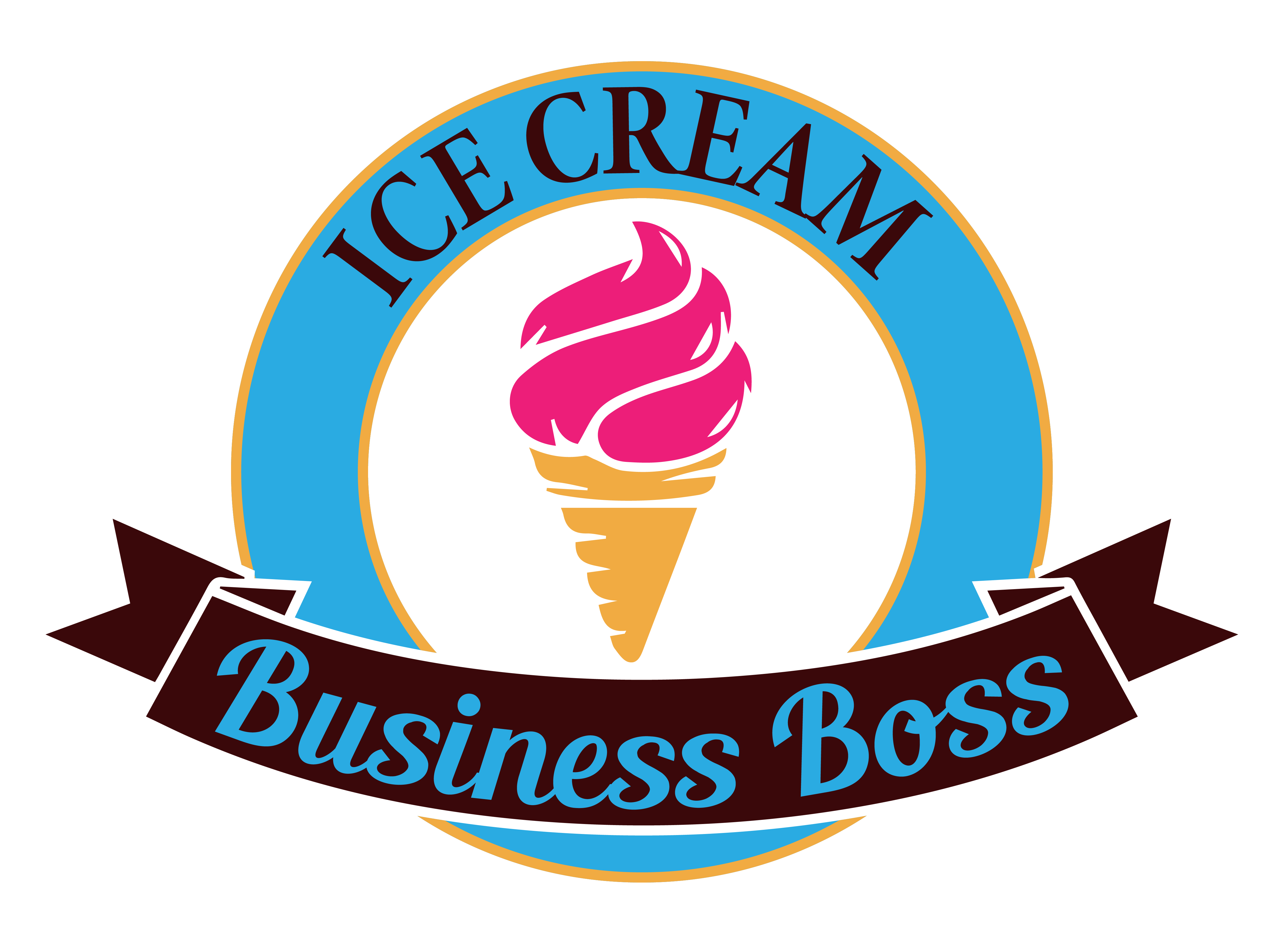When someone plans to open an ice cream shop, one of the most common pieces of information they intend to obtain is data regarding how profitable the business is expected to be.
The average profit margin for an ice cream shop is 25%-50%. This can be influenced by factors such as recurring costs, utility costs, marketing costs, cost of goods sold, and maintenance and miscellaneous costs. Various aspects also contribute to its annual profit like location, size, and products.
To evaluate the profit margin of your ice cream shop, you must be able to estimate the current and continuing expenditures associated with operating the business.
Average profit margin

The profit margin of your business over the long term, typically the midpoint of several years’ worth of business activity, is represented by the average profit margin when expressed as a percentage.
To compute, you first add up all of the costs and then all of the earnings, and then you obtain the overall profit margin. In addition, the percentage of revenue retained as profit can provide you with data on how well your business competes with others in your industry.
Even though there is no way to determine an exact figure because of varying factors, the average profit margin for ice cream shops is somewhere between 25 and 50 percent.
Four Long-Term Goals Of An Ice Cream Business
Recurring costs
Recurring Costs are the continuous expenses your firm will incur as it operates. These are your day-to-day, monthly, and annual operating expenses. You cannot avoid them, so be sure to consider the relevant ones.
Some examples of recurring business costs are:
- Rent or lease costs:
If your ice cream shop rents a property with periodic monthly payments, they should be categorized as recurring costs. These expenses are consistent from month to month and are included in the business’s basic operating costs.
- Salaries and wages:
Just like other businesses, your ice cream shop must provide employees with salary and benefits packages as compensation. This is a recurring expense because the business must pay for the cost of labor repeatedly throughout its operations.
- Tax costs:
Ice cream businesses are responsible for paying sales taxes and business taxes. Although tax charges vary based on the company’s income and the national tax rate, businesses continue to record these costs as recurring expenses.
Two Ways To Distribute Ice Cream
Utility costs
Utility costs refer to the amount spent on necessary services like electricity, water, and internet. The expenses are computed and accumulated throughout the reporting period or when payment is made.
The type of equipment used in your ice cream shop will affect the monthly costs for electricity, gas, and water. You can anticipate a cost of $640 to $4,000 here.
The high end more appropriately represents an ice cream shop that has televisions with large screens, lit decorations, and various other pieces of equipment that consume a lot of electricity.
The higher the cost of utilities, the lower the profit, but when energy-intensive equipment is utilized, utility costs are reduced, resulting in a larger profit for the shop.
The majority of ice cream shops discover that they pay costs for their utilities that are on the lower end of that range.
Marketing costs

To increase the number of customers who visit your business, you will need to get the word out about what you do. You have several various options available to you, including social media marketing, print advertising, broadcast advertising, and web advertising; the costs associated with each of them will be different.
You could spend as little as $40 on a solution for email marketing, or you might spend as much as $5,000 on more powerful advertising campaigns. Your costs will go up proportionately to the amount that you spend on marketing efforts, and this will affect the calculation of your profit margin.
Why the Ice Cream Shop is a Food Service Business
Cost Of Goods Sold
The cost of the ingredients such as the milk, cream, and sugar used to make your ice cream, as well as the different toppings and syrups, are all included in the Cost of Goods Sold (COGS) computation. Think of everything that is directly associated with selling your products. The COGS will determine how much of a profit margin a business will have. Having a higher amount of COGS will eventually decrease your profit.
In terms of finances, the most significant factor to look at is the COGS. Why? because the amount of money that is left over after covering COGS needs to cover the rest of the items on your profit and loss statement.
Check out this article to learn how to figure out your cost of goods sold.
Miscellaneous and Maintenance Costs
Equipment eventually breaks down due to regular use. You will need to include the price of doing routine maintenance and other unforeseen expenses in your computations because these will eventually affect your profits in the end.
When creating a budget, it is always a good idea to include some funds for various other expenses. You should budget at least $500 per month to cover miscellaneous costs and up to $500 per month for maintenance costs.
How Much Profit an Ice Cream Shops Makes
Various aspects that contribute to the annual profit
Before providing an estimate of the average ice cream shop’s total earnings, we have to consider several factors.
- Ice cream shop location
Location is crucial when establishing a new firm, which is why feasibility studies and market research are necessary. For instance, the annual profit of an ice cream shop located in a low-traffic area will be significantly lower than the annual revenue of an ice cream shop located in a high-traffic district of a bustling metropolis.
- Ice cream shop size
If you don’t know how big an ice cream business is, it’s impossible to give you a simple answer about how much money you can anticipate making per year. Even if both businesses are located in the same city, the annual revenue projections for the ice cream shop will be vastly different from those of a normal ice cream shop franchise with many locations.
- The type of ice cream and other offered products by the shop
The types of ice creams and other related products sold by the ice cream business will also play a significant role in determining its expected total profits. In addition to selling a variety of ice cream flavors, selling other products such as chocolate, cupcakes, soft drinks, and shakes will increase your predicted earnings. Also, if you provide delivery services, you will certainly earn more money.
Conclusion

The average profit margin for an ice shop is 25%-50%. This is influenced by certain costs such as recurring costs, utility costs, marketing costs, cost of goods sold, and miscellaneous and maintenance costs. Making sure your profit margins are where they need to be is a fundamental skill for any business owner. One major edge of operating an ice cream shop is the possibility of making profit from an unexpected surge in demand. By taking advantage of it, ice cream shops can reduce their cost and expenses and increase their profit margin.
The Space You Need For Your Ice Cream Shop
Frequently Asked Questions
The profit margin is significant for the following reason: it reveals the proportion of each source of revenue that is going directly to the net profit. Also, it can rapidly assist in determining where pricing issues lie.
There are three primary strategies to increase the profitability of a business increase sales, increase prices, and cut expenses.
To learn more on how to start your own ice cream/gelato business check out my startup documents here
This blog post is provided for informational purposes only. The information contained is not intended to constitute legal advice or to substitute for obtaining legal advice from a qualified attorney.

Hi! I am Shawn and I am a happy individual who happens to be an entrepreneur. I have owned several types of businesses in my life from a coffee shop to an import and export business to an online review business plus a few more and now I create online ice cream/gelato business resources for those interested in starting new ventures. It’s demanding work but I love it. I do it for those passionate about their business and their goals. That’s why when I meet a ice cream/gelato business owner, I see myself. I know how hard the struggle is to retain clients, find good employees and keep the business growing all while trying to stay competitive.
That’s why I created Ice Cream Business Boss: I want to help ice cream and gelato business owners like you build a thriving business that brings you endless joy and supports your ideal lifestyle.

